Western Bulldogs captain Bob Murphy must weigh up his ACL options
INJURED Bulldogs skipper Bob Murphy is just five games shy of his 300th match. So which surgery gives him the best chance of making the milestone?
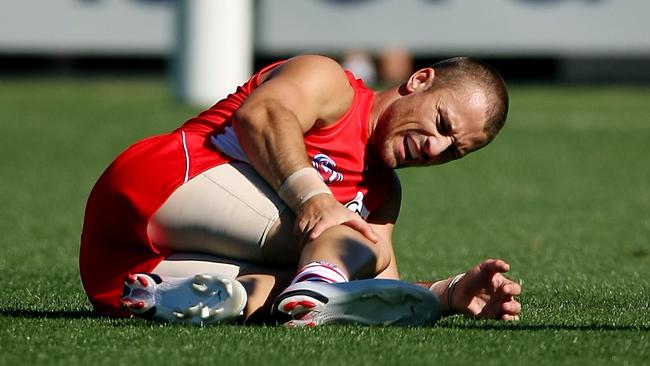
Bulldogs
Don't miss out on the headlines from Bulldogs. Followed categories will be added to My News.
IT’S safe to say everyone in the footy world wants to see Bulldogs skipper Bob Murphy make it back from a devastating ACL injury.
Traditionally he’d be looking at one of the longest recovery times for common AFL injuries.
But is it the season-ending blow it seems?
Here are the options that might get Murphy back on the field.
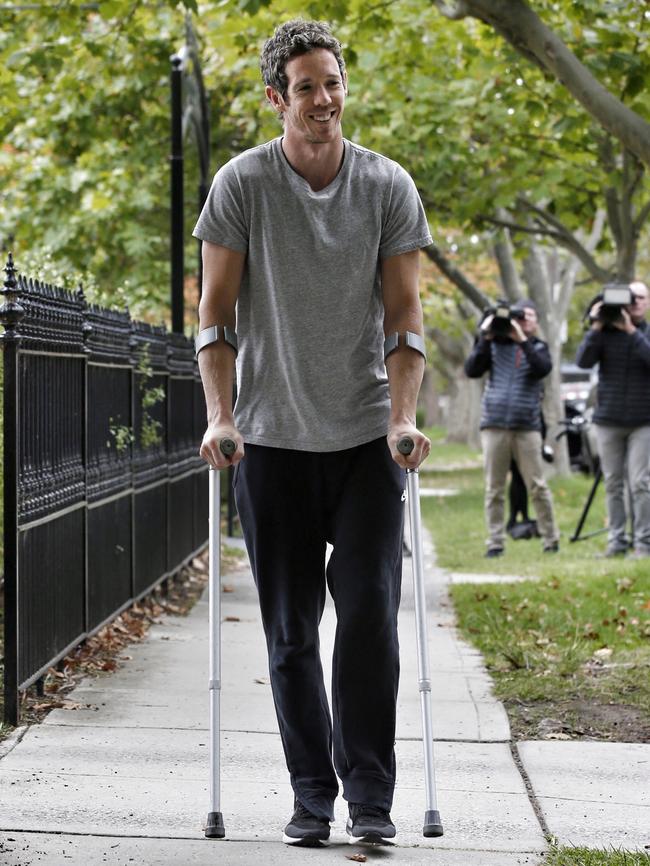
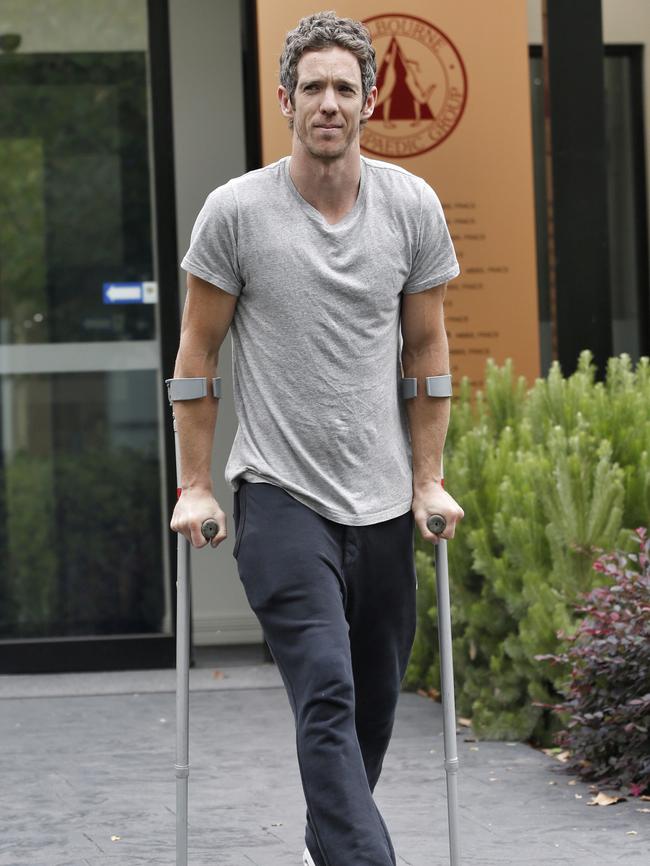
WHAT IS THE ACL?
The patella (knee cap), femur (thigh) and tibia (shin) provide the bone structure of the knee joint and the anterior cruciate ligament (ACL) is one of the four main ligaments which connect the bones.
The knee is basically a hinged joint, held together by the anterior cruciate, medial collateral (MCL), lateral collateral (LCL) and posterior cruciate (PCL) ligaments.
The ACL runs diagonally in the centre of the knee and provides rotational stability.
It also prevents the femur from moving forwards during weight bearing.
HOW IS THE ACL INJURY CAUSED?
The majority of ACL injuries in the AFL occur in non-contact situations.
Main causes include; abruptly changing directions — resulting in the knee twisting, the angle of the knee when landing, stopping quickly when running and a lack of stability within the individual player’s knee.
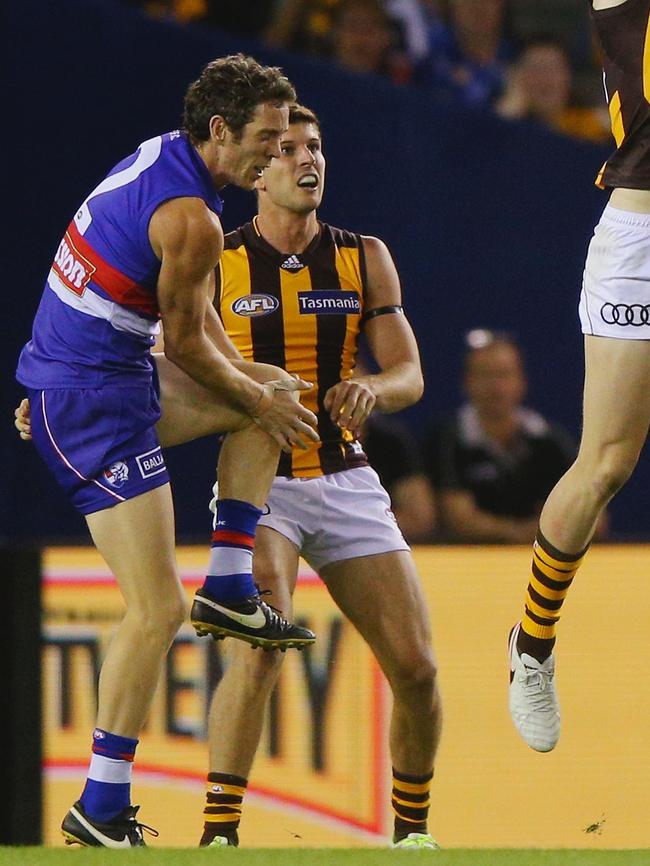
So what are the options?
TRADITIONAL KNEE RECONSTRUCTION
A traditional surgical ACL repair takes 12 months to fully recover from.
It involves taking a graft from the player’s leg and replacing the torn ligament with a hamstring or patella tendon — which can then result in issues within that area.
When the hamstring tendon is used, there can be decreased hamstring strength post operation.
This procedure has been used since the 1970s and doesn’t guarantee no future knee problems, but players can generally return to the same level of fitness they had before the operation.
It is more successful in sports that are not as high-intensity — the rigours of AFL can cause a rupture to the repair.
Any pre-existing knee issues can complicate the player’s recovery, as can the type of graft tissue used, surgeon experience, player’s genetics and type of rehabilitation program undertaken by the club.
LARS SURGERY
LARS — Ligament Augmentation and Reconstruction System — was developed by French surgeon Professor JP Laboreau around 20 years ago.
He wanted to find a synthetic material that could be used in any joint with ligament damage — mainly knees, ankles and shoulders.
The LARS ligament is made from industrial strength polyester fibre called polyethylene and comes in left and right versions for knees.
The material encourages the player’s own tissue to grow around its woven porous fibres.
This technique prevents the need for a tissue graft from the player’s body and significantly reduces the recovery time required by traditional surgery.
Certain things about the individual injury must be taken into account when considering the LARS option.
So many kind people out there... You've all brightened up a gloomy day. Thank you.Too many sad songs on the radio today! X
— Bob Murphy (@BobMurphy02) April 11, 2016

The technique was not developed for AFL — it was first used in Europe for sports that do not have the same physical demands of footy.
The synthetic material is only meant to reinforce the existing damaged ACL — so depending on the degree of the tear, it may not be an option as it cannot provide knee stabilisation on its own.
And it’s also not a case of if but when the LARS repair will fail.
When players return to the same sport that caused the injury, the rate of failure is much higher.
One of the factors that might make this surgery an option for Bob Murphy is that is it better suited to players nearing the end of their career, as he doesn’t need the repair to necessarily last the life of his knee — just another year or two.
In 2002 Sydney’s Nick Malceski had a traditional ACL repair on his left knee, seeing him out for 12 months.
After he ruptured his right knee ACL in the pre-season of 2008, he opted to have the LARS surgery.

Dr Laboreau happened to be teaching in Sydney at the time of the injury and was able to have direct input into Malceski’s procedure.
He was then able to return in round 8 of the same season.
Other players have since followed suit, including — David Rodan (Port Power), Josh Drummond (Brisbane), Brett Ebert (Port Power), Campbell Heath (Sydney) and Brett Staker (Brisbane).
All of the players made their return to footy within three or four months.
But Malceski, Rodan and Staker all ruptured their LARS ligament and had to undergo second revision procedures.
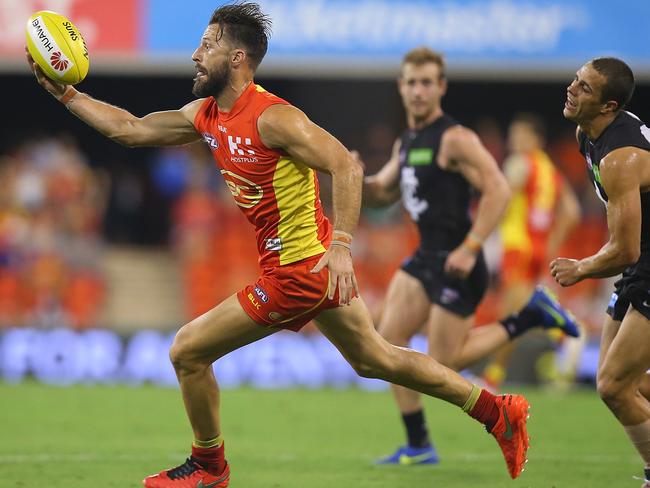
Dr Cameron Norsworthy performed LARS surgery on former Carlton forward Brad Fisher in 2010 and told the Herald Sun the technique was promising but not perfect.
“The LARS will always fail ... we just hope it fails further enough down the track that they have completed their career,” Dr Norsworthy said.
“Anything man-made that you put inside the knee will eventually fail; it’s just the environment of the knee and the stresses and demands upon it.”
Murphy is now the third Dog sidelined with an ACL injury, alongside Clay Smith and Roarke Smith — following Tom Liberatore from last year.
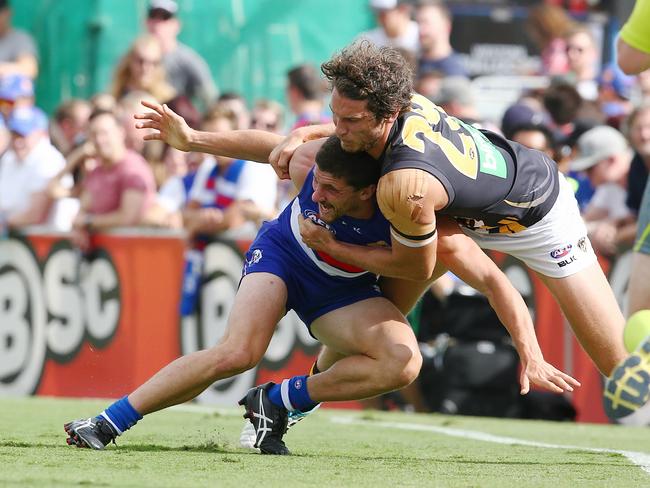
The Bulldogs have never opted for the LARS surgery but it could be Murphy’s only chance to take to the field with his doting dogs later this season.


